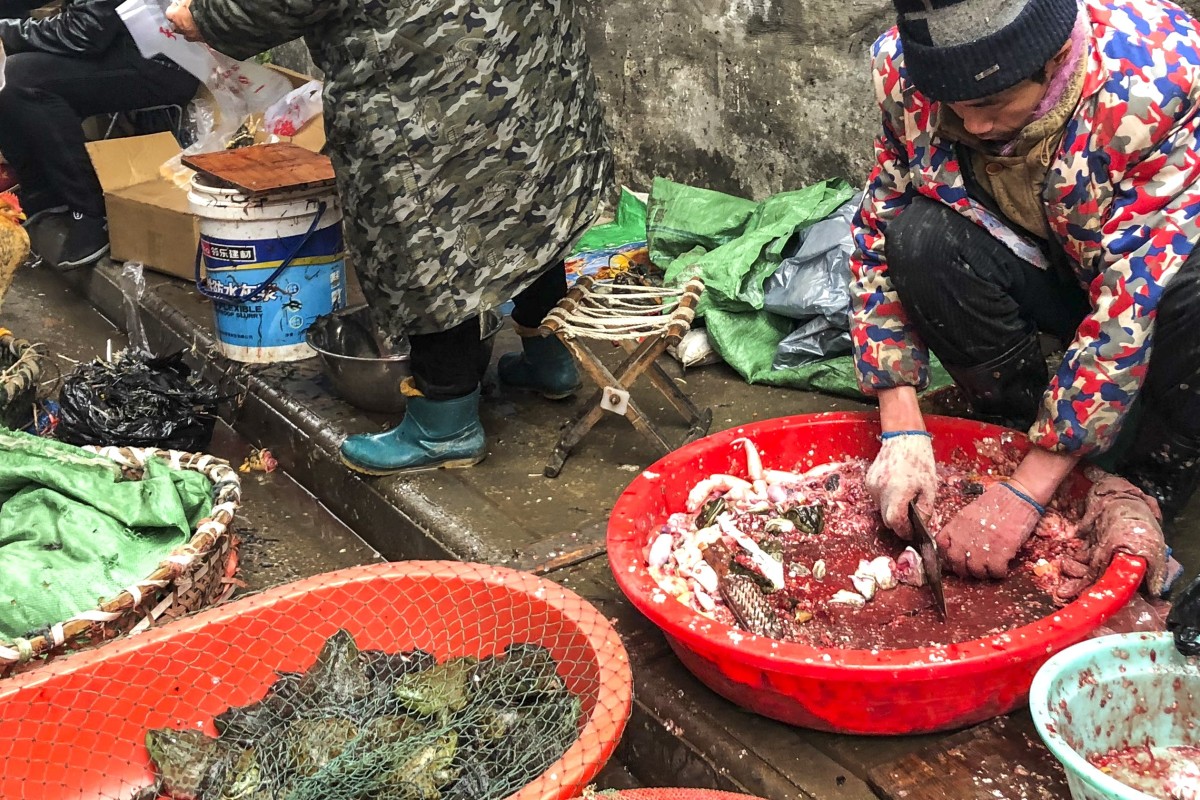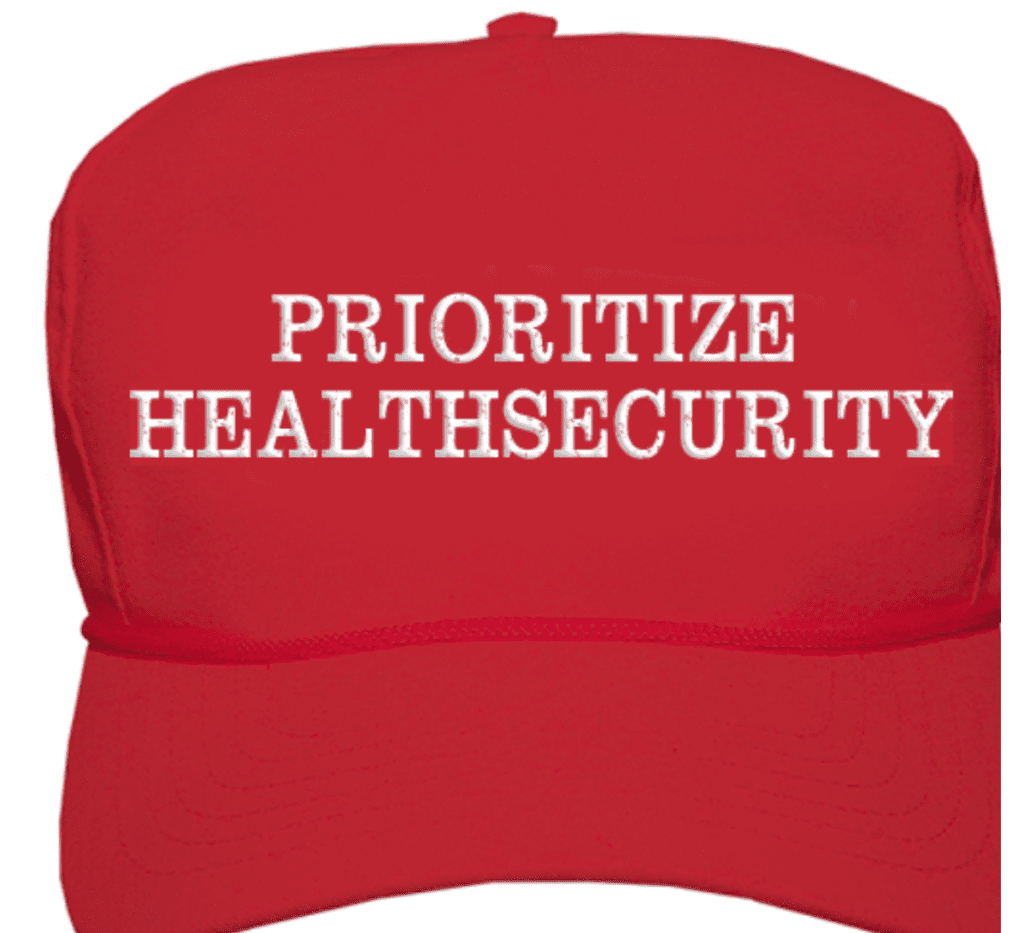On the same day that the World Health Organization said that there were now only 889 new cases of the coronavirus in China (down from 1749 on Wednesday), there were also reports of new outbreaks in two Chinese prisons. We also witnessed the deaths of two people in Iran (apparently from COVID-19) and an outbreak in Korea–now up to more than 150 cases—fueled by a superspreader associated with a strange cult and no known connection to China.
I’ve been having quiet conversations with colleagues recently wondering when we would start to see more aggressive transmission outside of China. Between this, the weirdness in Iran, and the cruise ship, I suspect we’re starting to seee it. https://t.co/V3TmeU54d4
— Jeremy Konyndyk (@JeremyKonyndyk) February 21, 2020
In the U.S., there are both reports of several hundred people getting out of quarantine after 14 days with a clean bill of health as well as the amazing story that the State Department overruled the Centers for Disease Control in allowing fourteen people infected with the coronavirus to be on the same plane of evacuees from the Princess Cruises ship.
So, we might be cautiously optimistic that the worst is behind us, or maybe not. It’s looking like the disease will not be contained in China, with there being local transmission taking off in a few other countries.
The first post in this series provided background on the virus, the second examined the declaration of a global health emergency, the third explored international travel restrictions, and the fourth reflected on China’s internal policies. In this fifth and final post of the series, I write about what policies the international community and individual states need to implement to contain this outbreak and prevent the next one.
Containing this Outbreak
I am not sure we are in good shape here, what with the reports out of Korea, Iran, and fears that there are far more cases circulating even in the United States than we yet know about. Dr. Tony Fauci of the National Institutes of Health warned of this possibility in an interview with Michael Gerson in the Washington Post.
“All that is needed is for a few countries in the developing world that can’t contain the coronavirus. This could be the second wave of the outbreak that could then progress to a true pandemic.
Dr. TONY FAUCI, National Institutes of health
What is needed to prevent this outbreak from getting out of hand?
Be ready to assist if the disease spreads to new countries. If these Iran cases are confirmed, then the World Health Organization and CDC need to get there as soon as possible and help instruct doctors and health systems on proper techniques to avoid spreading the virus within hospitals. The videos of the bedside of the stricken patients look like they have limited understanding of transmission risks and how to stop the spread.
Why is this family member not wearing protective gear? Why aren’t health providers in PPEs?#COVID19 in #Iran … https://t.co/ut5LTDsjRN
— Laurie Garrett (@Laurie_Garrett) February 20, 2020
Deepen our understanding of disease dynamics. Up until the outbreak in Korea, it was unclear if the virus could be spread through “superspreaders,” people who spread the virus to many people at once. We need to better understand the extent to which this is possible and other dynamics such as the point if and when people can pass on the virus despite being asymptomatic themselves.
Develop better diagnostic techniques. Here, we need better, cheaper, easier diagnostic techniques to identify who has the virus. Thus far, governments have had limited capacity to determine who had the virus, which led the Chinese government to expand its count to include prospective cases based on symptoms because it didn’t have the bandwidth to test everyone.
Not all that many labs had the capability to test for the virus using polymerase chain reaction (PCR) tests, and these PCR tests required some skill to be used correctly. The whistleblower Li Wenliang came back negative several times before finally being confirmed to have the virus shortly before he died.
Some promising results suggest a new test can determine within 15 minutes and one drop of blood if a person is infect with COVID-19.
China develops COVID-19 detection kit that delivers results in 15 minutes https://t.co/ifG5YCHui3 via @cgtnofficial
— ɪᴀɴ ᴍ ᴍᴀᴄᴋᴀʏ, ᴘʜᴅ 🦠🤧🧬🥼🦟 (@MackayIM) February 21, 2020
Invest in a vaccine. As former Food and Drug Administrator Scott Gottlieb wrote in The Wall Street Journal this week, we need a vaccine as quickly as possible so we can prevent this virus from becoming embedded in the global population. At risk populations, particularly health workers, could be among the first to receive the vaccine if it can be produced and found to be effective. While my university discovered a breakthrough in mapping the genetic sequence of the virus earlier this week, a vaccine is not likely for 18 to 24 months at the earliest.
Develop and roll-out therapeutics. The seasonal flu has drugs like Tamiflu. There are some promising antiviral drugs that could be deployed, combining some AIDS medications. These could help those with the virus survive and experience less severe effects.
Balance community protection and restoring normalcy. As I wrote in my last two posts, critics of quarantine measures and travel restrictions generally worry that these policies are less effective and are costly over-reactions to threats. China’s economy has ground to a halt. At some point, life needs to return to normal, and Chinese authorities need to identify where it is possible to lift travel restrictions so that people can go back to work.

Preventing the Next Outbreak
There are a variety of measures that states and international organizations should employ to reduce the likelihood of future outbreaks.
Permanent closure of wild animal markets. One measure that China (and other countries like Vietnam) need to pursue is the permanent closure of wild animal markets. They have been temporarily closed in the midst of this outbreak, as they were after the SARS outbreak in the early 2000s.
The 2002-2003 SARS outbreak jumped from bats to civets to people. This outbreak most likely jumped from bats to an intermediate host, possibly a pangolin, to people. These wild animal markets bring animals in to contact with each other, with their scat and blood mixed as butchers use the same knives to carve up different species.
If we want to avoid exposing human populations to such viruses, these markets need to be permanently shuttered.

Make health security a priority again in the United States. In the wake of the 2015 Ebola crisis, the Obama administration funded health capacity in partner countries and elevated the priority to health security by appointing people to the National Security Council to lead the effort.
The Trump administration dissolved that position and proposed steep budget cuts to support that agenda, though Congress has generally rejected those proposals.

To reverse these changes, Senator Angus King of Maine has proposed a bill, the Global Health Security Act, which would ensure that the National Security Council has a permanent person to work on health security (that post has been vacant for two years).
The bill has $300 million behind it to help the White House’s efforts to build health security from pandemics at home and abroad, with $190 million for CDC and $110 million for USAID. A companion bill in the House (H.R. 2166) has also been introduced.
A pandemic disease emerging anywhere in the world is a threat to American public health – that’s why this week, I introduced a bill to create a permanent position on the National Security Council that would be charged with monitoring and preventing global health threats. pic.twitter.com/qylQTLsJow
— Senator Angus King (@SenAngusKing) February 15, 2020
The bill builds on recommendations from a report launched in November 2019 by the Center for Strategic and International Studies that made 7 key recommendations:
- Restore leadership at the White House National Security Council
- Commit to multi-year funding for the Global Health Security Agenda to support partner country efforts
- Establish a Pandemic Preparedness Challenge at the World Bank to encourage preparedness
- Provide for rapid access to funding in the wake of health emergencies
- Set up a U.S. Global Health Crises Response Corps
- Strengthen health systems capacity in conflict zones and other “disordered” states
- Develop new vaccines and address the anti-science backlash
Revisit the International Health Regulations. In the wake of the 2015 Ebola crisis, the WHO did considerable soul searching and donors made pandemic response a priority again with resources. Having said that, the WHO has struggled to declare a health emergency in a timely fashion both with Ebola in the DRC and with COVID-19. The WHO’s entreaties to countries to limit counter-productive travel restrictions have largely been ignored.
The WHO and member states should initiate a conversation about what is and isn’t working. It is not clear that the current system is still fit for purpose. I’m not convinced a tiered warning system is the right thing way forward.
I’m less worried about the declaration than I am about the lack of cooperation between China, the US, and the World Health Organization. The dynamic thus far in this crisis raises concerns that decoupling and political tension between the US and China puts the whole world at risk.
While these are not exhaustive lists of ideas to contain the current outbreak and prevent future ones, they provide a point of departure. Let’s hope the optimists are right about this outbreak, and we are not tested again for some time.
Joshua Busby is a Professor in the LBJ School of Public Affairs at the University of Texas-Austin. From 2021-2023, he served as a Senior Advisor for Climate at the U.S. Department of Defense. His most recent book is States and Nature: The Effects of Climate Change on Security (Cambridge, 2023). He is also the author of Moral Movements and Foreign Policy (Cambridge, 2010) and the co-author, with Ethan Kapstein, of AIDS Drugs for All: Social Movements and Market Transformations (Cambridge, 2013). His main research interests include transnational advocacy and social movements, international security and climate change, global public health and HIV/ AIDS, energy and environmental policy, and U.S. foreign policy.


0 Comments
Trackbacks/Pingbacks